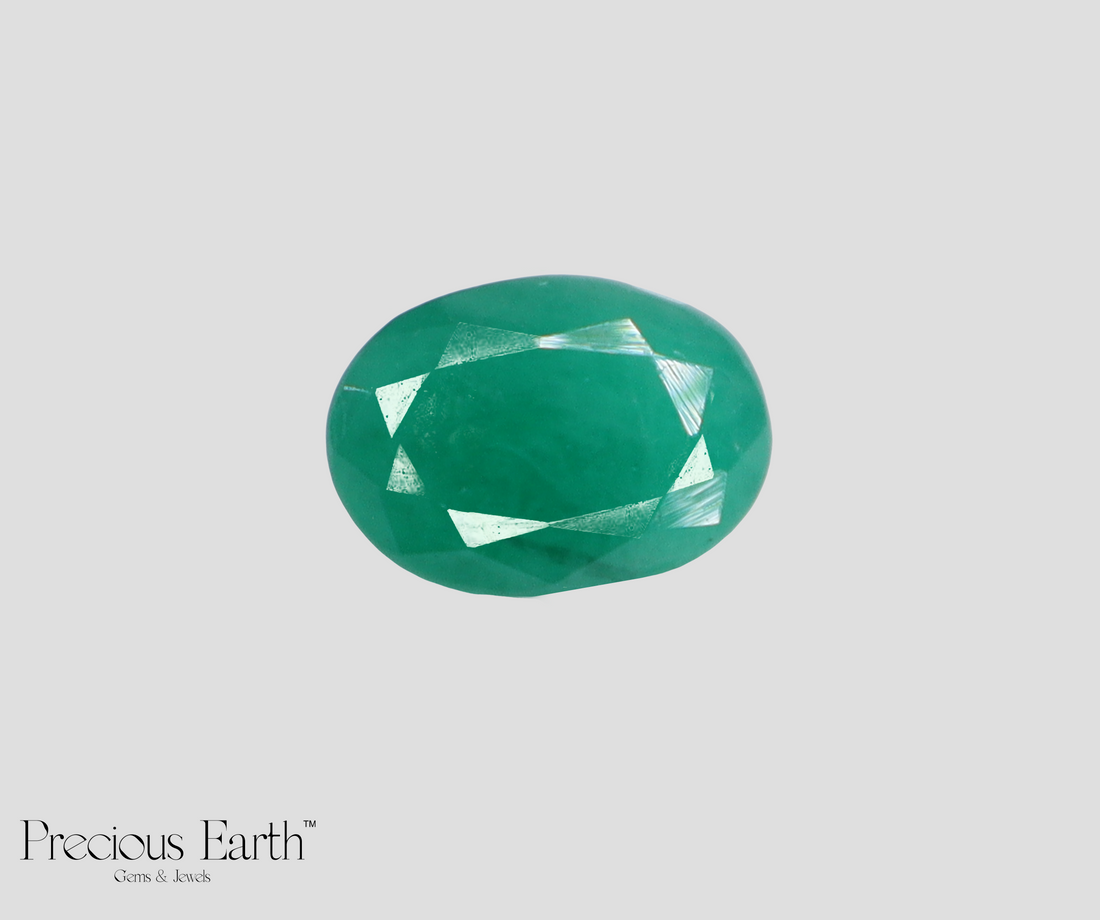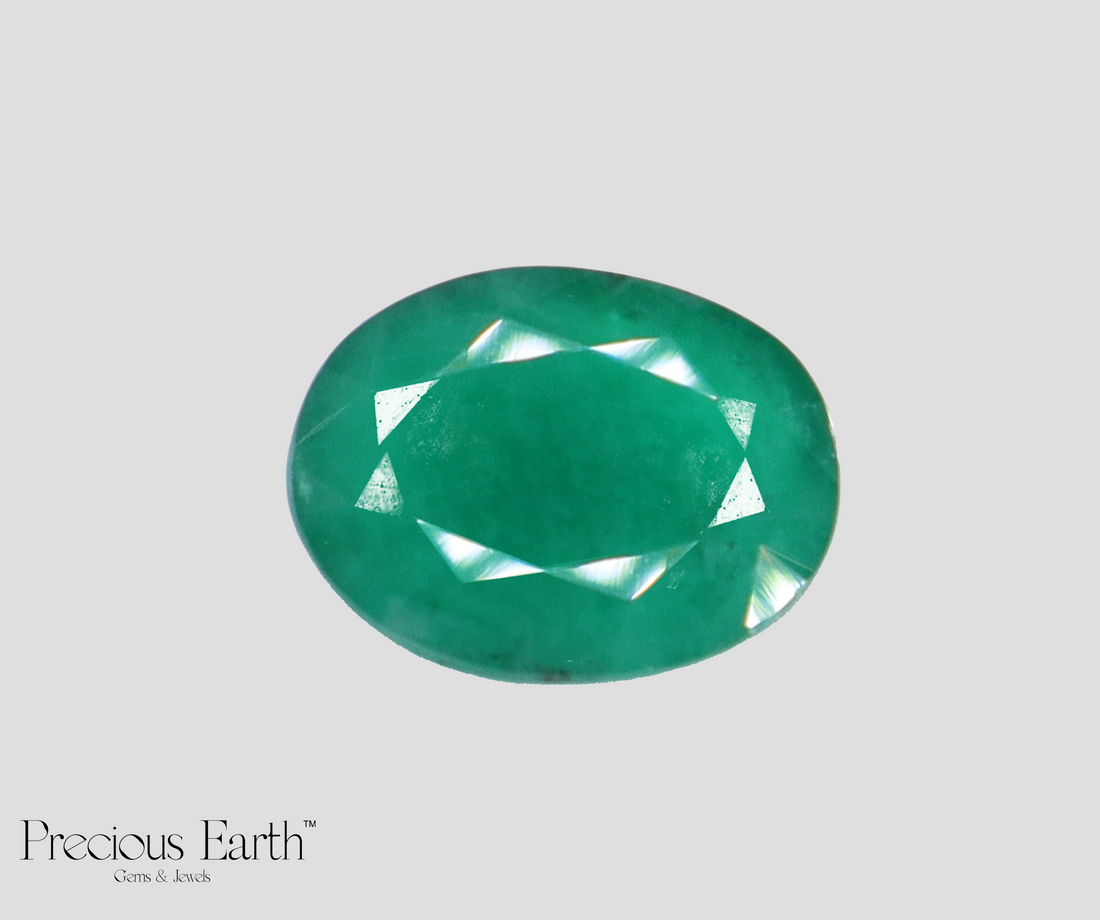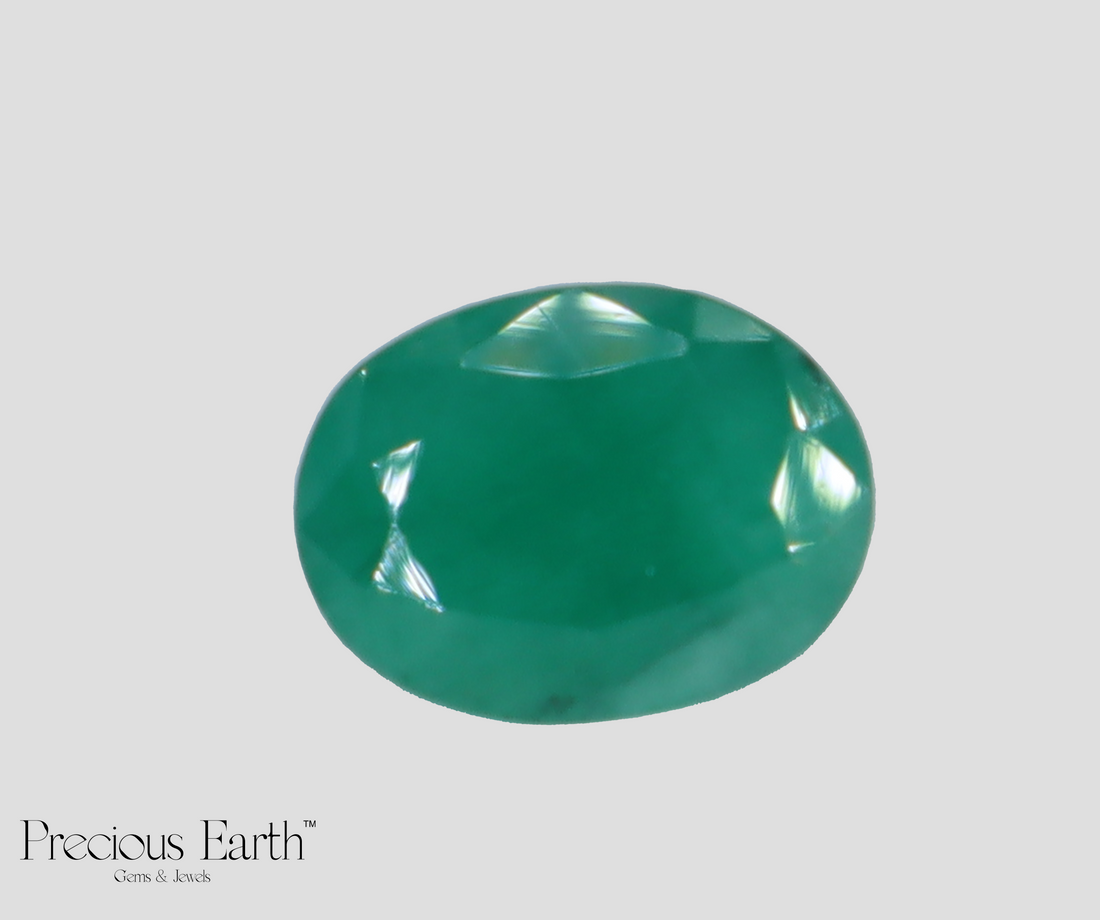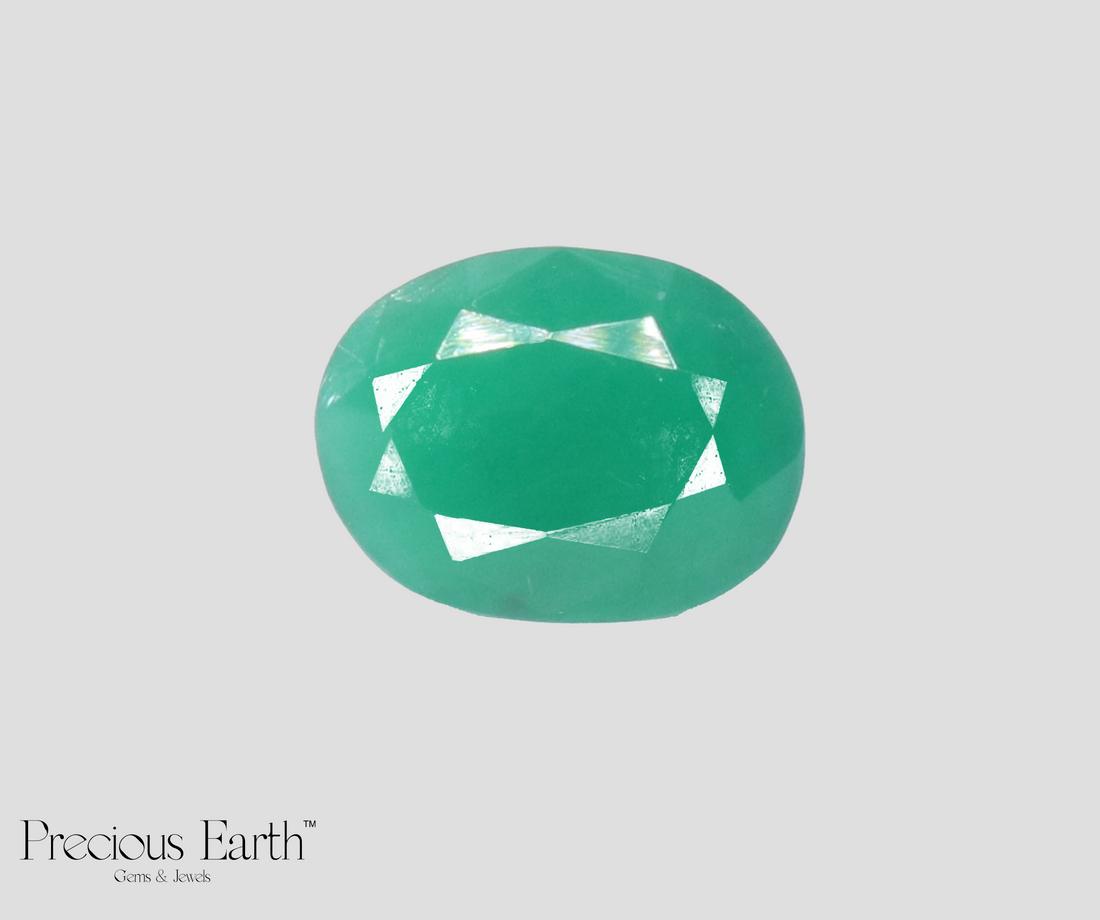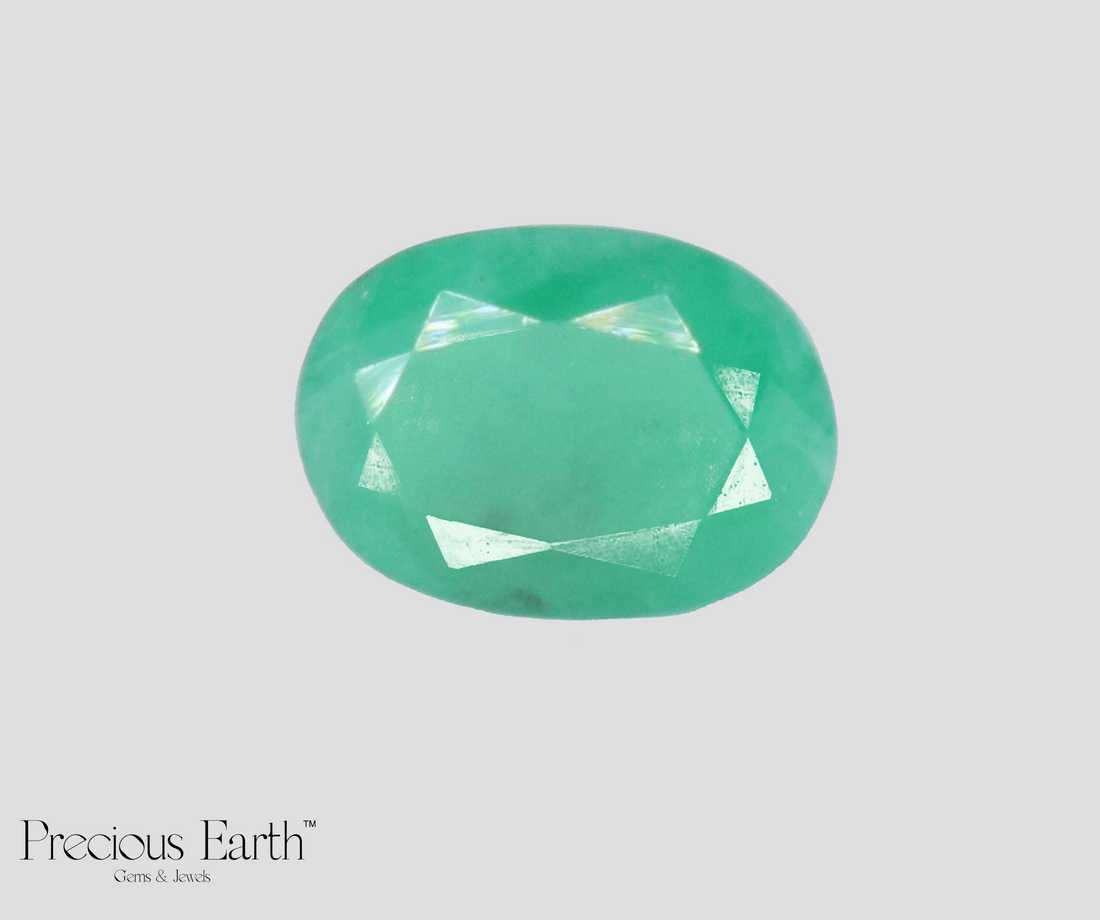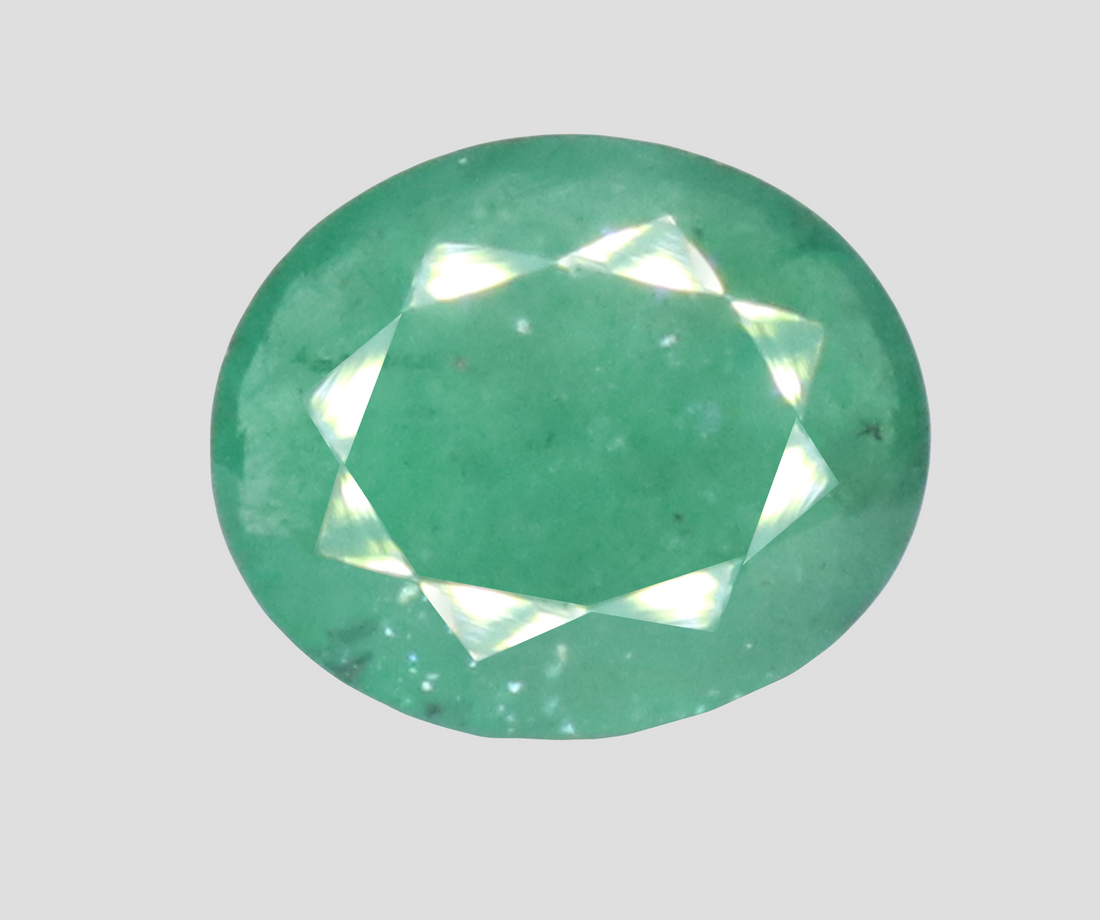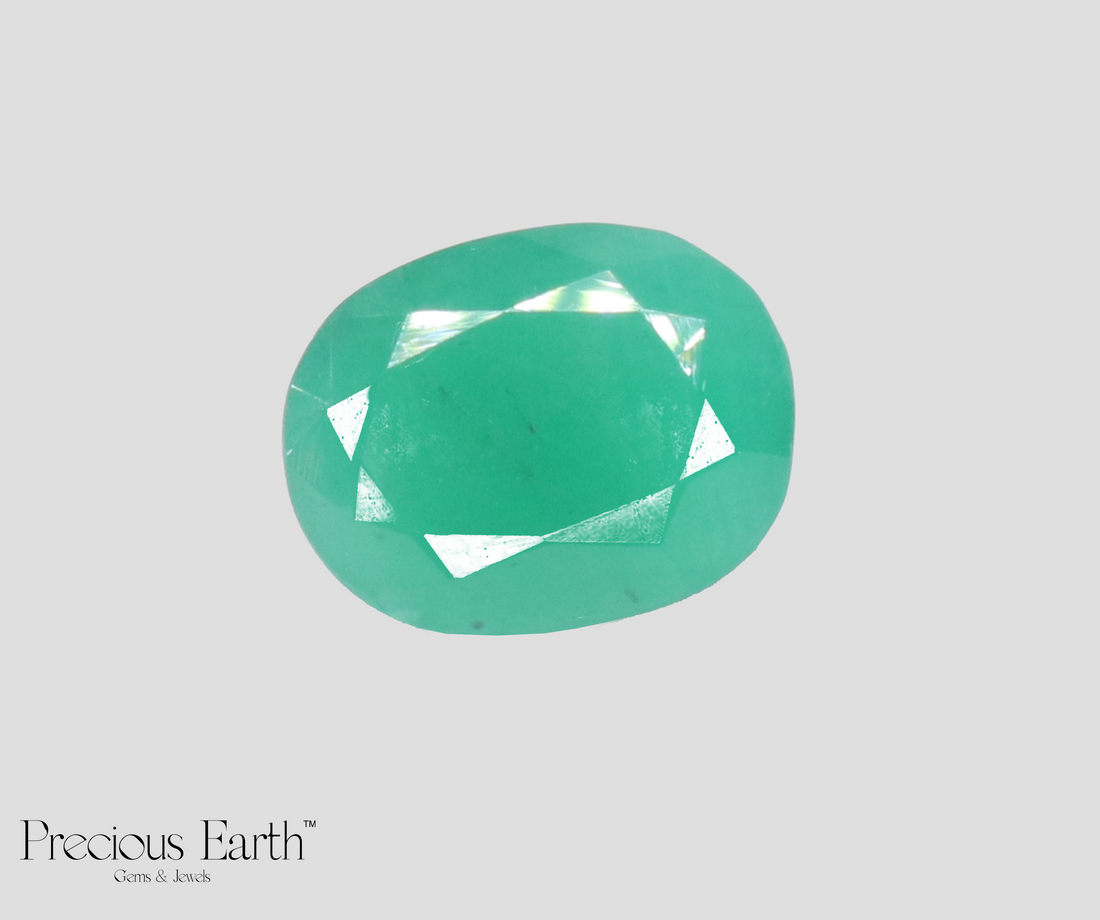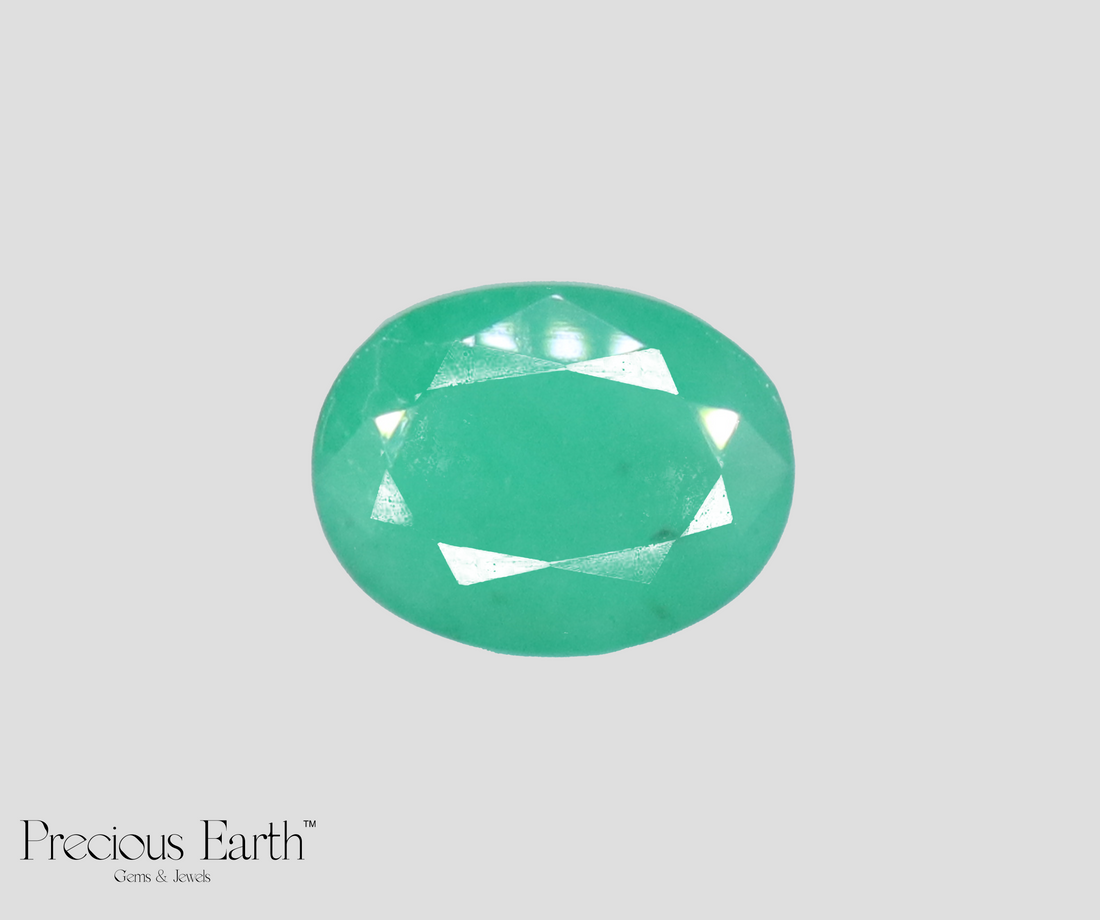This article serves as part of an ongoing series of profiles on the different varieties of precious & semi-precious gemstones. To view the entire list, click here.
Emeralds - popularly known as the panna stone in India, are a highly-coveted precious gemstone that have captivated the world for centuries with their range of lush-green hues and dazzling beauty. These gemstones are among the most sought-after gemstones in the world (along with the “Big 4” – sapphires, rubies, & diamonds), and for good reason. It is also said that Queen Cleopatra was known to have a great fascination and love for this precious green gemstone. According to ancient texts, Cleopatra owned vast collections of emeralds and even claimed exclusive rights to the emerald mines in Egypt. It is said that she would wear emeralds not only as jewellery but also ground into a fine powder, which she would use as eyeshadow.
In this profile for the panna stone, we delve into the various aspects of this gemstone, such as its sources of origin, where it is mined, the range of its colours, the patterns of its inclusions, treatments it may undergo, quality criteria, price brackets, as well as its astrological significance.
1. Emeralds - Formation & Occurrence
Emeralds are among the most coveted gemstones in the world, valued for their vivid green hues and remarkable clarity. These precious stones are formed when mineral-rich fluids flow through rocks and deposit beryllium, aluminium, and other elements over millions of years. As the minerals solidify, they create the distinct crystalline structure that gives emeralds their unique appearance.
Emeralds are composed primarily of beryllium aluminium silicate, with small amounts of chromium or vanadium. They are commonly found in a variety of rock types, including mica schists, quartzites, and pegmatites, and are mined in countries such as Colombia, Brazil, Zambia, and Zimbabwe.
One of the most fascinating aspects of emeralds is the range of colours they exhibit - from a light, almost yellowish-green to an intensely saturated deep, lush green. These colours are the result of trace amounts of other elements, such as chromium or vanadium, which interact with the beryl during the crystal's formation. In fact, the presence of these trace elements is what distinguishes emeralds from other beryl varieties, such as aquamarine or morganite.
2. Where Are Emeralds Found?
Emeralds or panna stones are mined in various regions around the world, with each region producing emeralds that differ in quality, colour, and characteristics. The following are the primary sources of emeralds today:
- Colombia: Colombia is widely considered the most important source of emeralds in the world, with its deposits accounting for nearly 70% of the world's emerald production. Colombian emeralds are renowned for their intense green colour, clarity, and fine crystal formations. The most significant emerald mines are located in the Muzo, Chivor, and Coscuez regions of the country. Colombian emeralds are known for their exceptional transparency and their fluorescent green hues – formed due to the region's unique geology that creates the perfect conditions for emerald formation. Colombian emeralds, in general, are considered among the world’s highest-quality emeralds.
- Zambia: Zambia is a relatively new source of emeralds, with mining starting in the 1970s. The Kagem mine, located in the north-western part of the country, is the largest emerald mine in Zambia and one of the world's largest. Zambian emeralds are typically darker in colour than Colombian emeralds, and showcase a bluish-green hue. They are relatively less transparent than Colombian emeralds, but depending on their specific characteristics, these emeralds can still be of high quality.
- Brazil: Brazil is another significant source of emeralds, with its deposits located in the states of Bahia, Goias, and Minas Gerais. Brazilian emeralds are typically lighter in colour than Colombian and Zambian emeralds and often have a yellowish-green tint. They are also usually a lot more opaque and have a low degree of transparency. In general, Brazilian emeralds are somewhat inferior in quality relative to Colombian and Zambian emeralds.
- Afghanistan (Panjshir): The Panjshir region in Afghanistan is known for producing emeralds with a unique bluish-green hue. These emeralds are often small in size but are highly sought after for their unusual colour. Due to political instability in the region, mining operations are often informal and lack modern equipment, making it difficult to produce these emeralds on a large scale, and consequently, making these emeralds extremely rare.
- Russia: Russia has a long history of emerald mining, with deposits located in the Ural Mountains. Russian emeralds are often similar in their hues and transparency to Colombian emeralds, and sometimes it is hard to distinguish between the two varieties.
It is worth noting that although the above list includes the most popular origins for the panna stone, these gemstones are also be found in other countries, such as Ethiopia, Austria, and the United States, among others. While all of these regions produce emeralds, they differ in terms of colour, quality, and mining practices. The quality and characteristics of emeralds from different regions can vary widely, and it is important to consider factors such as colour, clarity, and origin when evaluating a particular emerald.
3. Are All Emeralds Green?
As a rule of thumb, it is good to know that by definition, emeralds are the green variety of the mineral Beryl. Now although these green shades can vary from a light green tint to a uniformly saturated, lush deep green – all can be considered emeralds. On the contrary, Beryl can also occur in a range of other colours such as blue, pink, yellow, red etc. For example, the blue variety of beryls is known as Aquamarine, and if the beryl displays an orangish-pink tone, it is classified as a Morganite. The red beryl (sometimes also incorrectly called “red emerald”), one of the rarest minerals on Earth, was historically known as Bixbite.
Given this information, it is good to understand that when you hear someone say or use the term “emerald” it refers to not just the mineral Beryl, but specifically, the green variety of beryls.
 Beryls occur in a range of colours. From left to right: Emerald (green), Morganite (Orange-pink), Aquamarine (blue), and Heliodor (yellow) - all composed of the mineral Beryl.
Beryls occur in a range of colours. From left to right: Emerald (green), Morganite (Orange-pink), Aquamarine (blue), and Heliodor (yellow) - all composed of the mineral Beryl.
4. Common Inclusions in Emeralds
Unlike sapphires and diamonds, emeralds are a variety of gemstones that are highly inclusive. This means that in general, emeralds have more impurities and inclusions than other types of precious gemstones, and the type and location of these inclusions can provide insights into the origin and qualities of an emerald. Colombian emeralds, for example, include fissures, needles, and gas bubbles, and are often referred to as “Jardin” (meaning garden) since these inclusions resemble tiny plants. Zambian emeralds, on the other hand, usually contain 3-phase inclusions, which are tiny crystals that have gases or liquids trapped within. Panjshir emeralds can contain similar inclusions such as gas bubbles and fissures, but are relatively less pronounced.
As such, a magnified study of emerald inclusions can provide one with a deeper understanding of the formation of an emerald, its quality, and its probable mine of origin. This study of inclusions in emeralds is particularly important since emeralds are highly inclusive.
 Air-bubbles & crystal inclusions in an Emerald (Source: GIA)
Air-bubbles & crystal inclusions in an Emerald (Source: GIA)
5. Common Treatments & Enhancements of Emeralds
Natural panna stones often come with inclusions and blemishes that can affect their clarity and overall value. As a result, they are often subjected to various treatments and enhancements to improve their appearance and durability. Among the most popular treatments for emeralds, are oiling and fracture filling.
Oiling is the most commonplace treatment for an emerald. It involves filling the fractures and cavities on the surface of the emerald with a colourless oil or resin to improve its clarity and transparency. The oil fills the tiny fissures in the gemstone, which makes them less visible to the naked eye. This is a harmless treatment, and doesn’t affect the value or the structural integrity of the gemstone. In fracture-filling, a clear epoxy resin is injected into the fractures of the emerald to improve its clarity and stability. The resin hardens and fills the voids in the gemstone, making it less prone to breakage and damage.
| Mineral | Beryl |
|---|---|
| Colour Span | Pale light green, to a uniformly-saturated intense green. May also occur in tones of blue-green, and yellowish-green. |
| Popular Origins | Colombia, Zambia, Brazil, Russia, and Afghanistan |
| Mohs Hardness | 7.5 - 8.0 (on a scale of 10) |
| Common Treatments | Oiling, Resin-filling |
| Birthstone | May |
Emeralds (Panna) - A Quick Snapshot
6. Evaluating the Quality of an Emerald
When assessing the quality of an emerald, the following factors are among the most important to consider:
To determine the overall quality of a panna stone, it is important to work with a reputable jeweller or gemmologist who can assess the gemstone's characteristics and provide an expert opinion.
7. How Much Do Emeralds Cost?
In general, Colombian emeralds command a value premium due to their high levels of transparency, and can cost anywhere between $100 to $5000 per carat, and sometimes even higher. Zambian emeralds can range between $50 to $3000 per carat. Brazilian emeralds are generally cheaper.
8. Emeralds in Astrology
In Vedic astrology, the panna stone is believed to be associated with the planet Mercury and are believed to have many beneficial properties, including:
- Enhancing communication and intellectual abilities.
- Boosting creativity and artistic talents.
- Providing a calming effect on the mind and body.
- Stimulating healing and regeneration
 Emeralds (Panna) in Astrology
Emeralds (Panna) in Astrology
However, it is important to note that the use of gemstones for astrological purposes is a complex topic, and individuals should always consult with a qualified astrologer or gemmologist before using gemstones for these purposes.
Emeralds or panna stones are nothing short of a majestic wonder, bearing a rich history, mesmerizing green hues, and unique inclusions that make them an exceptional gemstone. The process of their formation, deep within the Earth, never ceases to amaze gemstone collectors and geology enthusiasts. The allure, beauty, and rarity of emeralds appeal to a broad audience, including discerning jewellery designers who seek the ultimate masterpiece and intuitive astrologers who search for spiritual connections. It's a gemstone that exudes elegance and sophistication, a true testament to the natural wonders of the world, and those fortunate enough to behold it can attest to its captivating and inspiring beauty.


